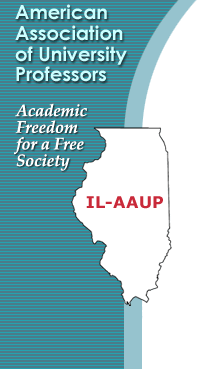 |
|
Two Hobgoblins:
High Tuition and Student Debt
by Ken Andersen
Halloween is over. But Illinois faces both the short and long term impact of high tuition and student debt. While these are national problems, they are a greater problem in and for Illinois with great significance for the state’s future.
Student Debt
Last year the Faculty Advisory Council to the Illinois Board of Higher Education provided a useful examination of the impact of student debt. Nationally, debt levels for graduating seniors increased 109% over the last ten years (2005 data) with the biggest borrowers students of modest means. In Illinois, the state scholarship program (3.7% increase fy02 to fy07) has not kept pace with the increases in tuition. The debts of Illinois graduating seniors in 2005 averaged $17,089 at public institutions; $18,431 at private ones. But averages mask the debt level of many graduates.
The impact of student debt or the effort to avoid debt is felt in various ways. Students with debts report they delay buying a home, getting married, having children. Many shun low-paying public or social service positions given the need to repay the education loans. But, how many students take longer to graduate or drop out trying to minimize the debt they carry? How many delay going to college or do not attend college because they think it is out of their reach financially? Given the increase in headlines such as USA Today’s “Sticker Shock on Campus” and increasing public concern about to high tuition and limitations on aid, many families do not see college in their children’s future. We have data (limited and inadequate though it may be) for those who enter higher education but we don’t have much data on the rationale for the choice not to attend.
High Tuition
In 2000 Illinois earned an A on affordability in the Measuring Up report of the National Center for Public Policy and Higher Education. In 2006 it earned an F. At my Urbana-Champaign Campus tuition and room and board rose 12% from 05-06 to 06-07. In the last four years tuition and fees more than doubled.
Why High Tuition? The State’s Choice
Since 2000, Illinois has lagged far behind the national average of increases in state resources devoted to higher education, according to Carrie Hightman, IBHE Executive Director. Adjusted for inflation, the state’s support for higher education is $97 million or 6% less this year than in fiscal 1993. In 1985 the state provided UIUC with 40% of its operating funds in 1985, 18% in 2007. Tuition was 9% of that budget in 1985, 23% in 2007. Across Illinois, the cuts in state support meant larger classes, fewer tenure-track faculty, more adjuncts and part-timers, significant cost-cutting. But that couldn’t overcome the decline in state support. Sharply increased tuition and fees were the answer. Cost shifting from the state to students and parents is the reality.
Who loses?
Students: Although no administrator trying to attract students will admit it, larger classes and fewer tenured/tenure-track faculty, poorer facilities mean educational quality suffers. As individuals carry more debt, slow degree completion or do not enroll, they suffer.
Universities: Universities compete for students, faculty, and research funding. To the degree that salaries lag, facilities are not upgraded, labs lack cutting edge equipment, or students do not enroll, a university’s ability to fulfill its mission of teaching, research, and service suffers.
The tendency for the public—and legislators— is to hold the universities responsible for the high tuition levels. The ability to continue to raise tuition is limited and universities increasingly will be targets of public and legislative dissatisfaction. A potent analogy: although retirees made every payment required of them while the state did not, the public tends to blame the retirees for the pension shortfall, not the legislators. The public/legislative backlash against higher tuition is growing and colleges, I predict, will pay a penalty.
The state and its citizens: When potential students do not enroll, students delay completion or drop out, the state and its citizens suffer.
IBHE Executive Director Hightman cited these three facts in her October 22 speech at Loyola University:
· A person holding a bachelor’s degree will earn 73% more than a person without one.
· A person holding a master’s degree will earn twice what a high school graduate will.
· A doctorate or professional degree magnifies earning power two or three times.
Completion of one or more degrees means:
· Increased tax revenues
· A higher quality workforce
· More civic involvement
· Lower social costs for prisons, welfare, rehabilitation
· Enhanced community cultural activities and participation.
These are social goods where the entire society benefits rather than such personal goods as better health and enhanced career choices, quality of life, self-esteem, etc.
The unplanned social experiment, the GI Bill, revolutionized the life of many, many individuals, thus significantly enhancing the quality of life in the nation. Individuals who never thought of going to college did so resulting in tremendous societal and personal benefits. We should ensure the opportunity for our citizenry—young and not so young—to have access to higher education for the benefit of all.
A Personal Addendum: In 1951, at age 17, against my father’s wishes, I set out for college with a little over $200 saved and a partial tuition scholarship, meaning my tuition was $100 a year. (It was $105 a semester for my doctorate.) With a job in the food service, later a graduate assistantship, and no financial aid from my family, four years later in August, 1955, I had an M.A., $200 saved, and a job as an instructor at the University of Colorado. I could not do that in today’s college environment. That would be Ken Andersen’s loss, but not just my loss!
|
|


